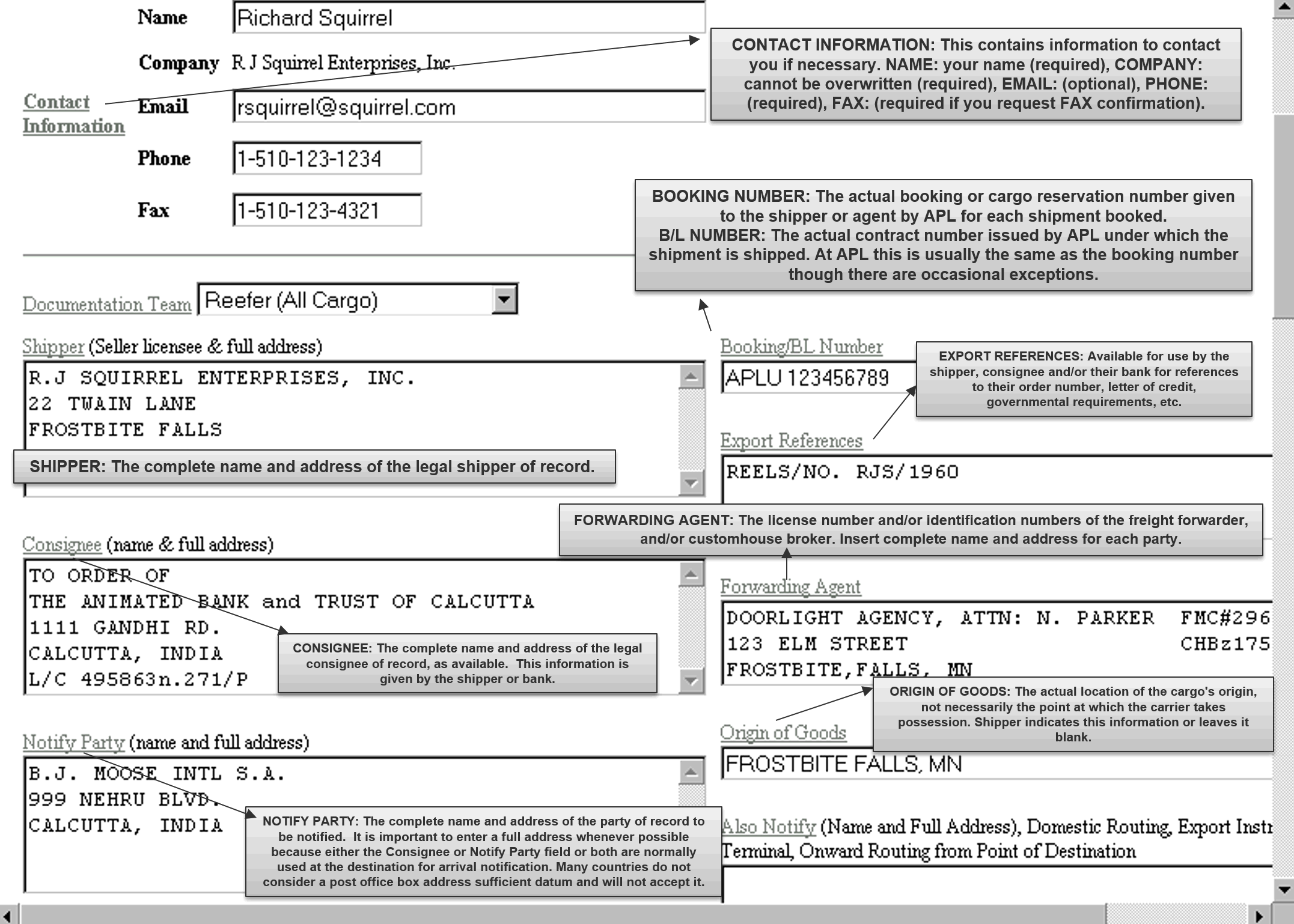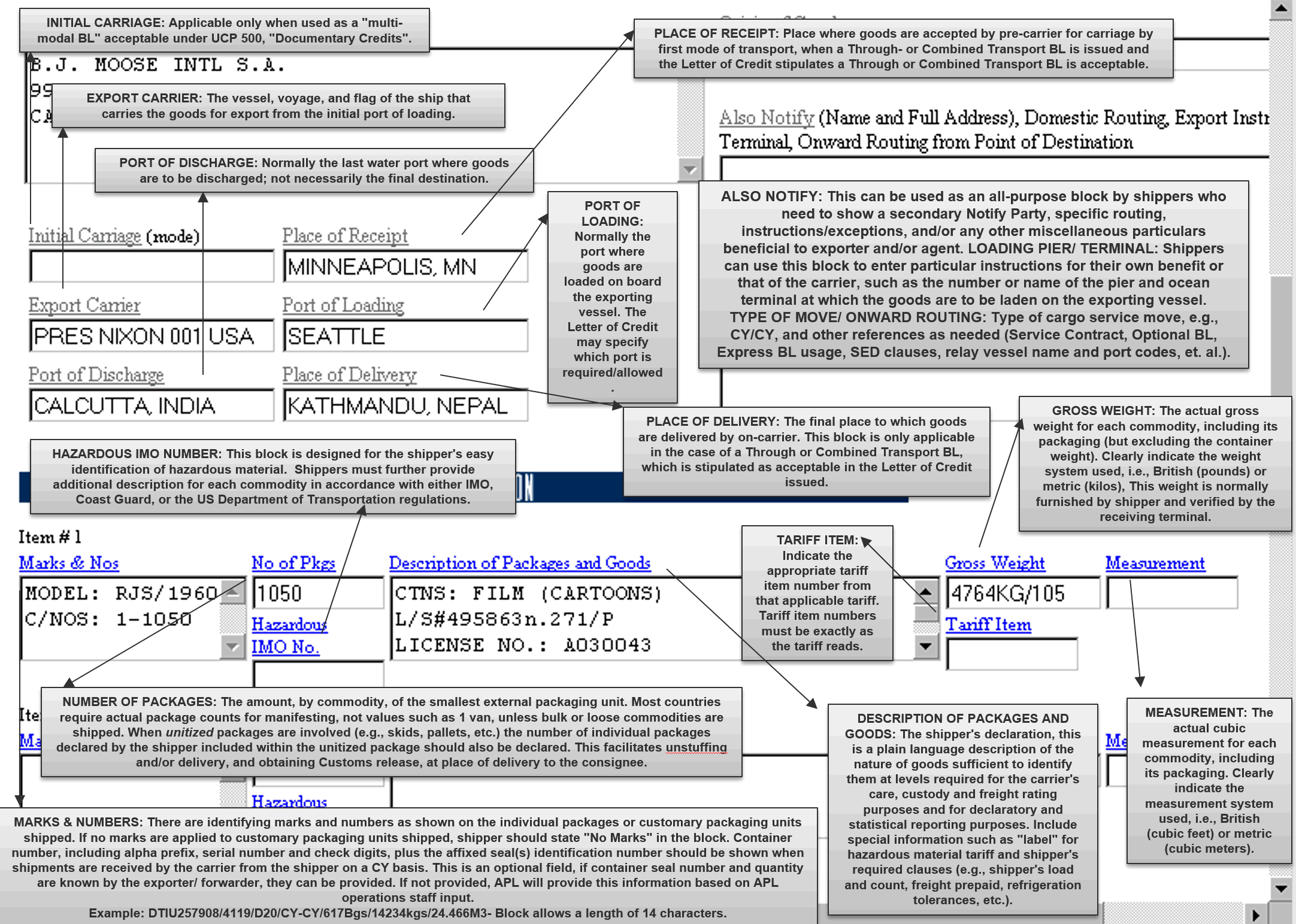Bill of Lading (BOL or B/L)
A bill of lading is a f orm provided by a shipper to document specific shipment information including origin, destination, carrier(s), number of items included in the shipment, etc. The bill of lading acts as a contract between the shipper and the carrier. Formats for bills of lading vary by mode of transportation including:
-
Overland Bill of Lading
-
International House Air Waybill of Lading
-
Ocean Bill of Lading
Overland Bill of Lading
A Straight Bill of Lading ”Short” Form may be prepared in several formats. Each of these formats provides the required information for the inland movement of goods by motor carrier (over the highway truck), by rail (on railroad), by rail/water, or by other combinations of these modes of transportation. The form itself is a contract of carriage between the shipper and the carrier.
The three purposes of the Bill of Lading used for the inland transportation of goods are:
- A receipt for the goods received in apparent good condition except as may be specifically noted on the B/L.
- A contract of carriage to move the goods, which have been duly marked, to the consignee and destination as indicated on the Bill of Lading.
- A title document for the goods. A Bill of Lading may be Negotiable or Non-negotiable, depending on the terms of sale.
International House Air Waybill
A non-negotiable bill of lading, produced in conformance with the International Air Transport Association’s specifications, the International House Air Waybill serves as a contract between the exporter and the air carrier or his agent.
Ocean (Marine) Bills of Lading (or Sea Waybill)
The bill of lading (in ocean transport), waybill or consignment note (in air, road, rail or sea transport), and receipt (in postal or courier delivery) are collectively known as the transport documents. The bill of lading (B/L) serves as a receipt for goods, an evidence of the contract of carriage, and a document of title to the goods. The carrier issues the B/L according to the information in a dock receipt, or in some cases according to a completed working copy of the B/L supplied by the customs broker. The B/L must indicate that the goods have been loaded on board or shipped on a named vessel, and it must be signed or authenticated by the carrier or the master, or the agent on behalf of the carrier or the master. The signature or authentication must be identified as carrier or master, and in the case of agent signing or authenticating, the name and capacity of the carrier or the master on whose behalf such agent signs or authenticates must be indicated. Unless otherwise stipulated in the letter of credit (L/C), a bill of lading containing an indication that it is subject to a charter party and/or that the vessel is propelled by sail only is not acceptable.

Ocean Bill of Lading Part I

Ocean Bill of Lading - Part II